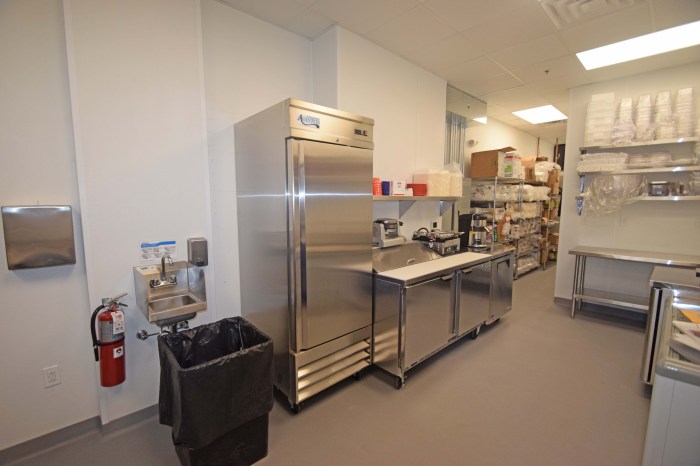Allowing a disgruntled employee to enter the food prep area poses significant risks and challenges that can jeopardize food safety and legal compliance. This article explores the potential consequences, mitigation strategies, and best practices for managing employee dissatisfaction to prevent such incidents.
Understanding the risks and implementing effective measures are crucial for food establishments to maintain a safe and sanitary environment, protect consumers, and uphold industry standards.
Potential Risks and Consequences

Allowing a disgruntled employee to enter the food prep area poses significant risks to safety and legal compliance.
Safety Hazards:
- Intentional contamination of food
- Sabotage of equipment
- Injury to other employees or customers
Legal Implications:
- Violations of food safety regulations
- Negligence lawsuits
- Criminal charges in cases of intentional harm
Examples:
- In 2015, a disgruntled employee at a Chipotle restaurant in California intentionally contaminated food with E. coli, resulting in a massive outbreak.
- In 2018, a former employee of a McDonald’s in Oregon was arrested for sabotaging the restaurant’s milkshake machine in retaliation for being fired.
Mitigation Strategies: Allowing A Disgruntled Employee To Enter The Food Prep Area

To prevent disgruntled employees from accessing food prep areas, several mitigation strategies can be implemented:
Policies and Procedures:
- Establish clear policies prohibiting disgruntled employees from entering food prep areas
- Implement procedures for reporting and addressing employee dissatisfaction
Physical Barriers:
- Use physical barriers such as locked doors or restricted access areas to prevent unauthorized entry
- Install security cameras and monitoring systems to deter and detect suspicious behavior
Employee Management and Support
Managers play a crucial role in identifying and addressing employee dissatisfaction:
- Monitor employee behavior and address any signs of discontent
- Create a positive and supportive work environment
- Provide resources and support systems for employees experiencing personal or professional challenges
Examples of support systems include:
- Employee assistance programs (EAPs)
- Counseling services
- Peer support groups
Communication and Training

Clear communication and training are essential for preventing and managing disgruntled employees:
- Communicate policies and expectations clearly to all employees
- Provide training on proper food safety practices and workplace behavior
- Encourage open communication and feedback from employees
By implementing these strategies, organizations can minimize the risk of disgruntled employees accessing food prep areas and ensure the safety of their food products and customers.
FAQ Summary
What are the legal implications of allowing a disgruntled employee to enter the food prep area?
Food establishments may face legal liability for foodborne illnesses or injuries resulting from actions by disgruntled employees. Violating food safety regulations and industry standards can also lead to fines or license suspensions.
How can food establishments prevent disgruntled employees from accessing food prep areas?
Establishing clear policies, implementing physical barriers, and using security measures can restrict employee access to sensitive areas. Monitoring systems and background checks can also help identify potential risks.
What role do managers play in managing disgruntled employees?
Managers should proactively identify and address employee dissatisfaction. Creating a positive work environment, providing support systems, and communicating expectations can minimize the risk of disgruntled behavior.